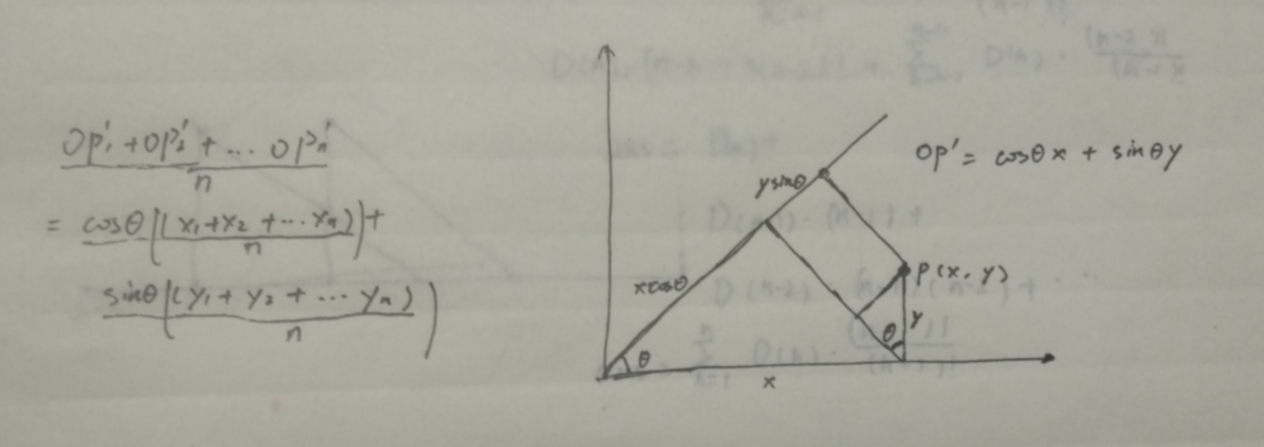ACM ICPC
每个队伍必须是3个人

#include<stdio.h> #include<string.h> #include<stdlib.h> #include<vector> #include<algorithm> using namespace std; int cmp(const void * x, const void * y) { //x < y return (*((double *)(x))) > (*((double *)(y))) ? 1 : -1; } int a[6]; int main() { #ifndef ONLINE_JUDGE freopen("input.txt", "r", stdin); #endif for (int i = 0; i < 6; i++) scanf("%d", &a[i]); int sum = 0; for (int i = 0; i < 6; i++) sum += a[i]; bool f = false; for (int i = 0; i < 6; i++) { for (int j = 0; j < 6; j++) { for (int k = 0; k < 6; k++) { if (i != j && j != k && i != k && (a[i] + a[j] + a[k]) * 2 == sum)f = true; } } } if (f) printf("Yes "); else printf("No "); return 0; }
Vlad and Cafes

#include<stdio.h> #include<string.h> #include<stdlib.h> #include<vector> #include<algorithm> using namespace std; int cmp(const void * x, const void * y) { //x < y return (*((double *)(x))) > (*((double *)(y))) ? 1 : -1; } int a[200005]; int main() { #ifndef ONLINE_JUDGE freopen("input.txt", "r", stdin); #endif int n, x, ans; scanf("%d", &n); memset(a, -1, sizeof(a)); for (int i = 0; i < n; i++) { scanf("%d", &x); a[x] = i; ans = x; } for (int i = 0; i < 200005; i++) { if (a[i] != -1 && a[i] < a[ans]) ans = i; } printf("%d ", ans); return 0; }
Petya and Catacombs
记录之前每个房间的最近访问时间,对每一个数字如果能用之前的房间来凑就先凑,凑不了就增加一个新房间。

#include<stdio.h> #include<string.h> #include<stdlib.h> #include<vector> #include<algorithm> using namespace std; int cmp(const void * x, const void * y) { //x < y return (*((double *)(x))) > (*((double *)(y))) ? 1 : -1; } int a[200005]; int main() { #ifndef ONLINE_JUDGE freopen("input.txt", "r", stdin); #endif int ans = 1; a[0] = 1; int n, x; scanf("%d", &n); for (int i = 1; i <= n; i++) { scanf("%d", &x); if (a[x] > 0) { a[x]--; a[i]++; } else { ans++; a[i]++; } } printf("%d ", ans); return 0; }
Restoration of string
- If some string is the most frequent then all its substrings are the most frequent too.
- If string ab or similar is the most frequent then letter a is always followed by letter b and b always follow a.
- Let's consider directed graph on letters where edge a → b exists only if ab is the most frequent. If there is cycle in such graph then good string doesn't exist.
- So such graph can be represented as several non-intersecting paths. All strings which correspond to paths must occur in non-empty good string. So if we print them in lexicographical order then we will get the answer.
有3个判定条件:每个点入度不超过1;每个点出度不超过1;不能存在环。
按字典序输出所有路径

#include<stdio.h> #include<string.h> #include<stdlib.h> #include<vector> #include<algorithm> using std::vector; using std::sort; int cmp(const void * x, const void * y) { //x < y return (*((double *)(x))) > (*((double *)(y))) ? 1 : -1; } bool v[300], g[300]; int next[300], pre[300]; char str[100005]; bool dfs(int x) { if (g[x]) return false; g[x] = true; if (next[x] == 0) return true; return dfs(next[x]); } int main() { #ifndef ONLINE_JUDGE freopen("input.txt", "r", stdin); #endif int n, len; while (scanf("%d", &n) != EOF) { memset(next, 0, sizeof(next)); memset(pre, 0, sizeof(pre)); memset(v, false, sizeof(v)); bool flag = true; for (int i = 0; i < n; i++) { scanf("%s", str); len = strlen(str); for (int j = 0; j < len - 1; j++) { v[str[j]] = true; if (next[str[j]] == 0) next[str[j]] = str[j + 1]; else if (next[str[j]] != str[j + 1]) flag = false; if (pre[str[j + 1]] == 0) pre[str[j + 1]] = str[j]; else if (pre[str[j + 1]] != str[j]) flag = false; } v[str[len - 1]] = true; } for (int i = 'a'; i <= 'z'; i++) { memset(g, false, sizeof(g)); if (!dfs(i)) flag = false; } if (!flag) printf("NO "); else { len = 0; for (int i = 'a'; i <= 'z'; i++) { if (v[i]) { bool root = true; for (int j = 'a'; j <= 'z'; j++) if (next[j] == i) root = false; if (!root) continue; int ptr = i; while (ptr != 0) { str[len++] = ptr; v[ptr] = false; ptr = next[ptr]; } } } str[len] = '�'; printf("%s ", str); } } return 0; }
Maximum Element
You asked to find the number of permutations p of length n such that exists index i, such that pi ≠ n, pi is greater than any pj for j in [1, i - 1] and greater then any pj for j in [i + 1, i + k]. We will call such permutations good.
Define D(n) as number of good permutations that have pn = n. Notice that if k ≥ n, then D(n) = 0. Let w be a permutations such that wn = n. If index of element n - 1 is lesser than n - k, then w is good. Otherwise if n - 1 index is j, j ≥ n - k, then because there are less then k elements between n - 1 and n, w could be good only if i from the definition would be lesser than j. In that case permutation w1, ..., wj would form a good permutation of length j of some numbers with wj being the maximum.
Therefore the following equation is correct:

Which can be computed in O(n2), or in O(n) rewritten in the form

and using prefix sums for values  .
.
The answer is than calculated as follows:

Complexity: O(n).
Symmetric Projections

原点到点p的投影点的长度可以表示为p的横纵坐标的线性组合,所以,如果点集对某一条直线投影后关于某个点中心对称,那么这个点是点集质心对这条直线的投影。
首先求出点集的质心,对于落在质心上的一个点或关于质心对称的一对点不影响结果,可以去掉。
若此时点集中点的数量为0,则有无数条直线满足题意。
否则,对于点集中第一个点P0,枚举投影后与其对称的点,最多n个,并验证相应直线是否符合题意。
Solution(这个代码可能会由于long long数据范围问题被cha,不过数据太弱,还是a了,就没再改了)
Mod Mod Mod
题意无法理解
